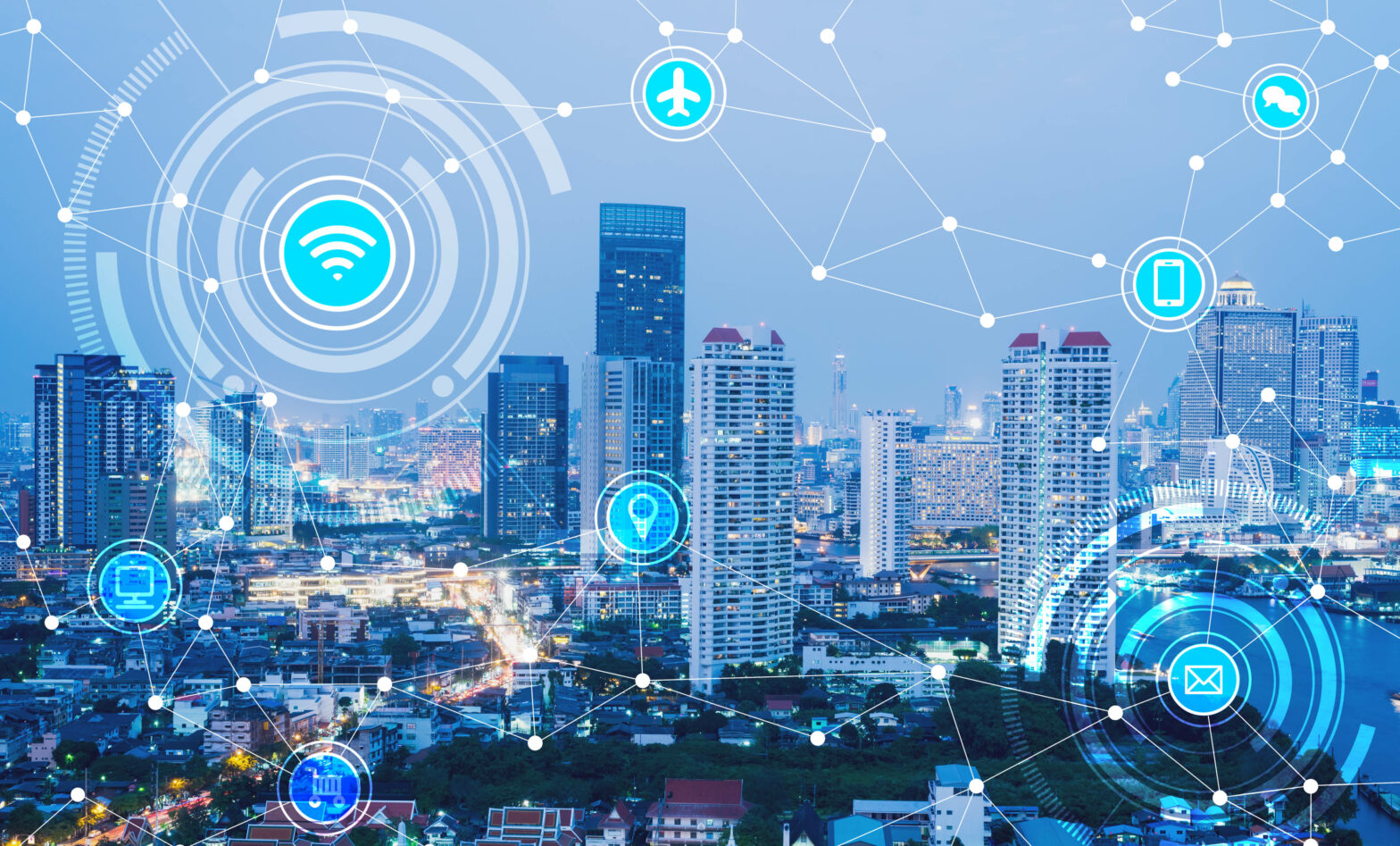There is roughly the same number of connected devices as there are people on Earth, but experts expect the current stock of gadgets to swell to 24 billion by 2030. The Internet of Things universe represents a vast number of different tools performing a litany of tasks, from enabling smart motorways to alerting homeowners when someone rings their doorbell.
“To build efficiency, we need large sets of data to be collected from multiple points in the supply chain, analysed and used to dynamically adjust and streamline processes,” says Nick Sacke, head of IT solutions at Comms365.
“We’re seeing a big push towards creating smarter street lighting installations to reduce energy consumption. This use slow power IoT networks to connect and control the lights. Similarly, in buildings, IoT-enabled measurement of people movement and energy consumption is being patched into the building management system, allowing dynamic control over heating, cooling and energy resources.”
The IoT and utilities
A leading use of the IoT is driving efficiency in energy consumption, both at the consumer end of the market, with smart meters, and, for utilities, by monitoring and assessing consumption and waste, fixing issues as they arise.
With global supply chains under strain and, partly as a result, wholesale gas prices increasing fast, the need to regulate and conserve energy has been brought into sharp focus. If network efficiency was a priority in the past, todays cost pressures mean collecting and analysing consumption data is critical for households and businesses alike.
Sacke says: “IoT can aid the energy sector by providing massive data in near real time that will enable comprehensive analysis and transformation from a highly centralised model to an agile, distributed, fully integrated, ‘smart’, sustainable energy network.
“Millions of smart meters are becoming IoT enabled to report back regularly on consumption, ensuring a highly efficient supply chain to the customer that minimises wastage. IoT can play a key role in infrastructure monitoring also – a key example of this are oil and gas pipelines, which have parts of the network in remote or challenging locations.
“IoT can keep a watchful eye on all the miles of pipelines to ensure integrity and report on anomalies before they turn into major incidents.”
The same can be said for water supply, with IoT-powered smart metering not only reducing the time and cost involved in manual meter readings, but also providing detailed information about consumer behaviour – which shifted radically during lockdowns – as well as pinpoint damaged pipe, so leaks can be repaired faster with less cost and disruption.
Read more: How to turn a crisis into an opportunity for small businesses – going green during the pandemic
Ever-expanding uses
Smart meters are helping to create a smart energy system which provides more reliable, efficient and low-carbon energy to households & businesses. This helps to manage valuable resources more efficiently, as energy use evolves.
For example, with the popularity electric vehicles on the rise, the smart energy system will help suppliers predict fluctuating periods of demand and supply more reliable, efficient and low-carbon energy to drivers.
A related technology, smart energy storage, is another growing use of IoT aimed at motorists. Housing renewable energy in the batteries of electric car fleets, for example, and coinciding charge times with off-peak periods, helps to balance demand.
Moixa, the UK-based smart battery business, uses data-driven energy storage and sharing to avoid peak times, lowering its carbon output and controlling costs.
“We apply this to smart charging vehicles such as the e:PROGRESS service we run for Honda-E electric vehicle (EV) customers which links to the Octopus Agile tariff,” says Simon Daniel, the company’s CEO.
“Being able to remotely manage vehicle charge times ensures more renewable energy can be harnessed to charge EVs. Smart charging can also help prevent the grid from becoming overloaded and the increased risk of blackouts.
“By offering internet connected energy storage [which serves to increase energy stability, by storing excess energy for later use when demand is higher] to their customers, energy suppliers cannot only expand their offering and be more proactive in the renewable space, but they can also create new revenue streams for themselves by supporting the grid.”
But the development of the IoT solutions in the utility sector presents challenges as well as opportunities. From the cost of materials and infrastructure to system complexity and data security, technologists building smart systems must navigate the future with care.
Anthony Coates-Smith is managing director of Insite Energy, which launched app-based heat metering solution KURVE in 2019. The app has been selected by several housing developers and Coates-Smith says the company’s commitment to addressing customer pain points has been key.
“There is a tendency for people to think IoT is easy, that it’s just about linking things up. But you’re dealing with people’s accounts, their data, their money. Everything is possible but certainly not out of the box ‘click and go’.
“In the built environment IoT needs to have a long shelf-life. Building technology has to last at least 20 years; it’s expected that our assets will last that long as well.”
The future is bright for the IoT, with experts agreeing it will contribute meaningfully to the way we power the future. For utility companies, it will improve efficiency, lower costs and, ultimately, help to serve customers better.
For more information about the benefits of installing a smart meter in your workplace, visit the Smart Energy GB at smartenergygb.org
This article is part of a paid-for information campaign for Smart Energy GB.





